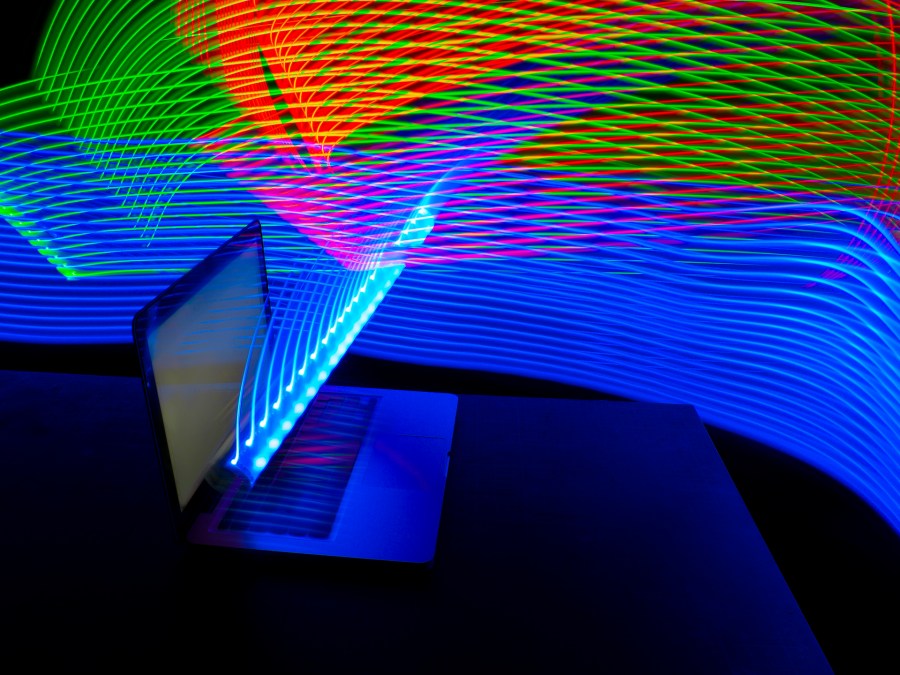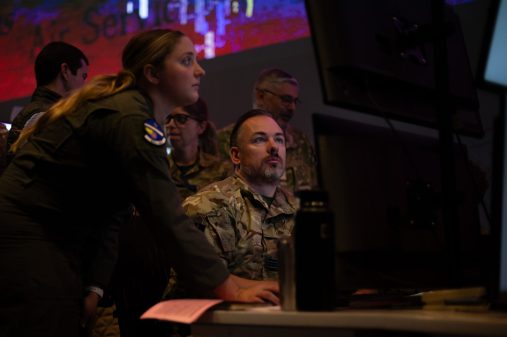Air Force issues call for cyber, electromagnetic, sensing capabilities to support ABMS

The Air Force issued a call to industry Tuesday in its hunt for new tools to improve its sensor architectures and degrade adversaries’ ability to target U.S forces.
The outreach came in an update to a broad agency announcement, posted on Sam.gov, for technologies to support an operationally focused Advanced Battle Management System (ABMS), which is the Department of the Air Force’s contribution to the Pentagon’s warfighting construct known as Combined Joint All-Domain Command and Control. The effort aims to better connect the sensors, data streams and weapon systems of the U.S. military and key allies under a more unified network. Such weapons include not just traditional munitions such as missiles, but also digital warfare tools that are sometimes referred to as “non-kinetic” capabilities.
“To effectively engage peer and near-peer adversaries, the U.S. Air Force needs to develop, acquire and operate systems as a unified force across all domains (air, land, sea, space, cyber, and electromagnetic spectrum (EMS)). The objective is to adopt the best practices of open architectures to enable rapid proliferation of new and existing software and hardware as well as developing enabling technologies that support maintaining the technological advantage,” the call states.
In 2022, Secretary of the Air Force Frank Kendall appointed Brig. Gen. Luke Cropsey to serve as the department’s first integrating program executive officer for command, control, communications and battle management (C3BM).
The C3BM office issued Tuesday’s call for concept papers for “Cyber Electro Magnetic Activities” capability development aimed at countering opponents’ command, control, communications, computers, cyber, intelligence, surveillance and reconnaissance (C5ISR) assets.
That includes tools “to deny, degrade, disrupt, or destroy enemy C5ISR capabilities to allow air and surface operations in and around denied or heavily defended areas. These activities should be viable in their delivery mechanism(s) and be able to integrate into an existing C2 architecture as part of the advanced battle management construct. Delivery mechanisms should be able to be integrated on or with existing platforms to the maximum extent possible,” the document states.
Additionally, the updated announcement includes a call for concept papers related to the development, maturation, integration, demonstration and proliferation of sensor hardware and software.
“In a conflict with a well-resourced adversary, U.S. forces could be faced with numerous surface and air moving targets. Blue forces must be capable of engaging those threats simultaneously, in high numbers, and in a time-compressed situation. Traditional airborne moving target intelligence, surveillance, and reconnaissance sensors will be threatened which will dictate ability to prosecute targets by new, non-traditional means and prioritizing those that would deny access to areas of interest. These systems need to be continually developed and improved and, moreover, integrated into the command-and-control structure,” the document states.
“Against the modern, advanced threat, sensors must be able to detect at significant ranges and discriminate as to type to effectively perform a countermeasure. Sensors must be able to process and communicate results in short timelines. A key interest is the compatibility and interoperability capabilities using open interfaces (such as UCI (Universal Command and Control Interface)) to enable improved control of systems and the processing of their data. Design, development, demonstration and integration of networked weapons engaged across complex (e.g. wide area mesh) environments capable of supporting C2 deconfliction and synchronization of multidomain assets,” it added.
The call comes as the Air Force is pursuing next-generation drones known as collaborative combat aircraft, or CCAs, that are expected to operate with a great deal of autonomy enabled by artificial intelligence agents. They are also envisioned to serve as robotic wingmen to manned fighter jets such as the F-35 and a Next-Generation Air Dominance stealth fighter, called NGAD, that’s in the works. The Advanced Battle Management System must allow for real-time connectivity between those types of manned and unmanned platforms and the sensors and weapon suites they carry, the document notes.
The two-step BAA process asks for vendors to submit concept papers to the Air Force. Offerors whose papers generate interest may be invited to submit a formal proposal that could lead to a contract award. The department is looking for tech that’s currently at Technology Readiness Level 3 or higher.
Concept papers are due March 31, 2025.






